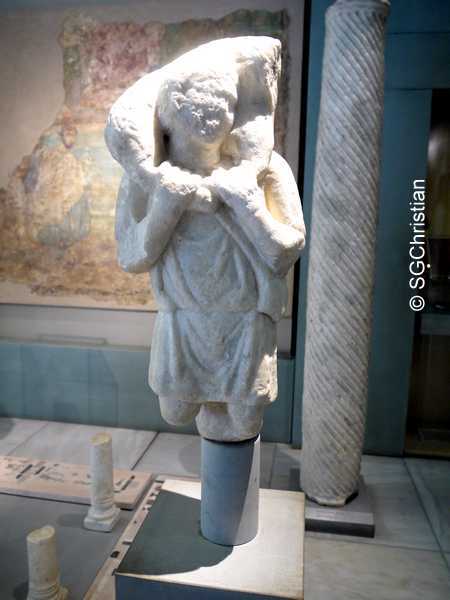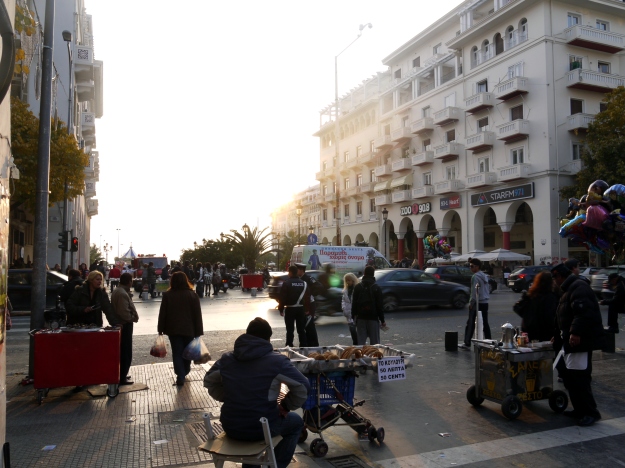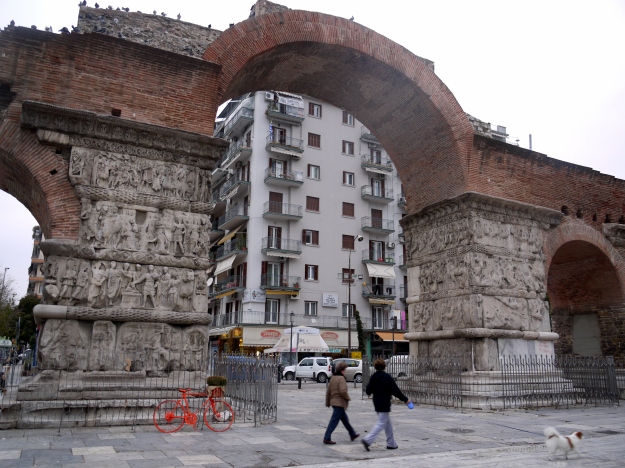One of the first Christian communities in European soil was established in Thessaloniki and according to Wikipedia, the “Rotunda is the oldest of Thessaloniki’s churches“.
Wikipedia also notes that “some Greek publications claim it is the oldest Christian church in the world, although there are competitors for that title“.
I am in doubt over Wikipedia’s claim of the Rotunda (also known as the Church of Agios Georgios) being the oldest church in Thessaloniki. In particular, the Rotunda was formerly a pagan temple before it had been converted into a church, and perhaps if you also took into account the number of years that the building had pre-existed as a pagan temple, then yes, the Rotunda would be the “oldest” church. The Rotunda is believed to have been built in 306 A.D. by the Romans.
That said, on a trip to Thessaloniki in November 2011, I visited the Rotunda and took some photographs of it:

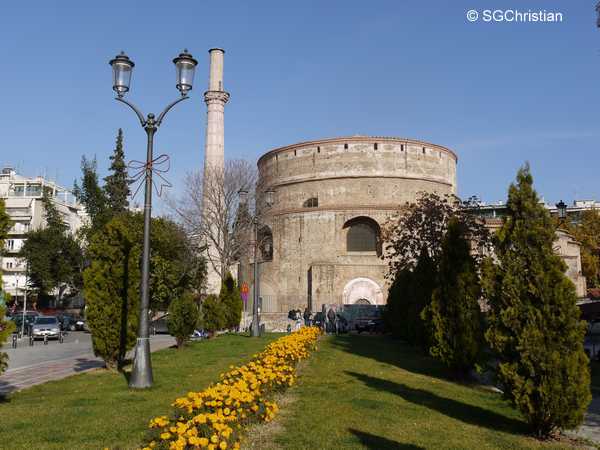






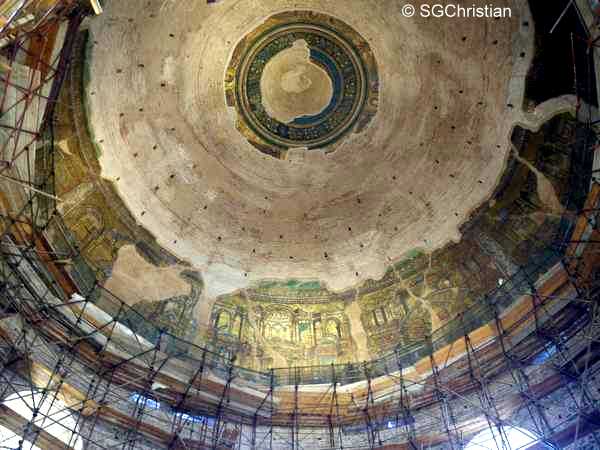


Just a couple of months before visiting Thessaloniki, the Greek Reporter newspaper reported the finding of the oldest Christian church in Thessaloniki:

The ruins of this church was discovered during the construction of a metro and the site was not open to the public when I visited. Based on the pattern of floor mosaic discovered at the site, the church is believed to have been built sometime toward the end of the 4th and start of the 5th centuries A.D.
At the time of writing this article, I could find no further information (in English) about this archaeological discovery.
Before travelling to Thessaloniki in November 2011, I had the good fortune of purchasing the “Walking Thessaloniki‘ guidebook directly from the author, Parissis Panou (I highly recommend this guidebook to anyone travelling to Thessaloniki)

I had purchased the guidebook over Ebay, and on discovering that I had purchased the guidebook directly from Panou, I wrote to him to ask some questions concerning Thessaloniki, and he was most helpful.
In the guidebook, it is stated that the “oldest” basilica (a 4th century one) ever found in Thessaloniki is situated beneath Tritis Septemvriou Avenue. However, that information was correct as at the time of the publication of the guidebook (in early 2011), and in writing to Panou in 2011, he conceded that it was probably made outdated by the finding reported in the Greek Reporter newspaper.
However, going back to the question of whether the church of the Thessalonians (the very one which the Apostle Paul had written to in his letters) still exists, sadly, I think the answer seems to be ‘no’, and I am not aware of any existing fellowship in Thessaloniki that has claimed to be a continuation of the one associated with the Apostle Paul.
Nonetheless, there exists very old church ruins in Thessaloniki (dating as far back as 4th century A.D.) — for example, one situated beneath Tritis Septemvriou Avenue, and another reported by the Greek Reporter newspaper — and perhaps either of these (or even all of them) may have had a connection with the Apostle Paul.
During my trip to Thessaloniki, I managed to locate the one situated beneath Tritis Septemvriou Avenue. It is actually rather inconspicuous; beneath a highway (so inconspicuous that I had difficulty finding it).

The site was enclosed by a wire fence, but could be accessed through a metal gate that was open on two occasions that I visited.

There was no security guarding the place, and I didn’t have to pay anything to get in. On both visits, there was nobody there but me — which was nice, because it allowed me to sit down, reflect, and just unhurriedly soak in the surroundings.
















